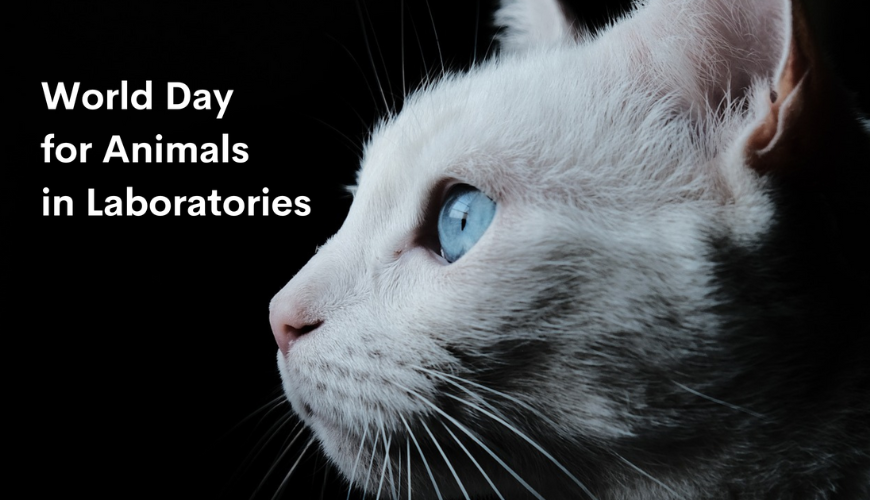
Today, April 24th, is World Day for Animals in Laboratories—a day for honest and open discussion about the suffering animals experience in laboratories. And make no doubt, animals in labs do suffer every day of their lives.
Having worked at the Food and Drug Administration and U.S. Army for more than a decade, I have been exposed to every kind of animal experimentation imaginable. But there is one experiment that especially haunts me.
I once attended a neuroscience conference featuring a talk about spinal cord injury. The presenter showed a clip of his experiment in which he crushed a cat’s spinal cord and was recording the cat’s movement on a treadmill. He forcibly implanted electrodes into the cat’s brain. She was struggling to keep upright, dragging her paralyzed legs on the treadmill. She repeatedly fell off the machine. At one point, the experimenter lifted her up to reposition her on the treadmill and the cat did something that was utterly unexpected. She rubbed her head against the experimenter’s hand.
I said a quiet prayer that her spinal cord injury wiped out her ability to feel pain in her legs. I couldn’t help but wonder if anyone else in the audience noticed what I did:
Even at the peak of her suffering, the cat was seeking comfort from the very hand that caused her pain. Ten days later, she was killed, and her brain dissected.
It’s difficult for us to imagine what life is like for these animals. This is because the public does not have access to these labs. But every day, these animals live in fear, pain, sadness, grief, and loneliness.
The good news is that there is a way to end this suffering. A much, much better way.
It’s common knowledge that results from experiments on animals don’t translate to humans very well. Despite the millions of tax dollars spent on crushing the spines of animals, for example, there is not a single treatment for people with spinal cord injury that works. More than nine in ten drugs that are safe and effective in animals fail in humans.
People suffer from animal experimentation, as well. In fact, there is no effective treatment for most human illnesses. It is for this reason that there has been a tremendous boon recently in the development of testing methods that are based on human biology.
Human chip models, 3D printed human tissues and organs, and cognitive computing technologies can significantly improve the drug development process. These complex models more faithfully recapitulate human physiology than animal tests and have the potential to predict human effectiveness and safety much more accurately. For example, human liver chip methods were recently found to be seven to eight times more accurate than animal tests in identifying liver toxicities in 22 drugs that later were either given blackbox labeling or pulled from the market despite being identified as safe by animal test results.
There is more to be done in the development of these human-relevant testing methods, but there is hope. We believe the future is bright. At CCS, we are working hard to make this future a reality as soon as possible.
In the spirit of World Day for Animals in Laboratories, we invite you to join us.
Here are some ways you can help:
- Sign the SPARK Pledge if you are a company or organization that conducts safety and toxicity testing and show your commitment to replacing animal testing to the public.
- Invest in promising technologies to replace animal experimentation.
- Subscribe to our newsletter.
- Follow us on social media and share our news.
- Donate to CCS and be a catalyst for improved human health through innovative research methods.

